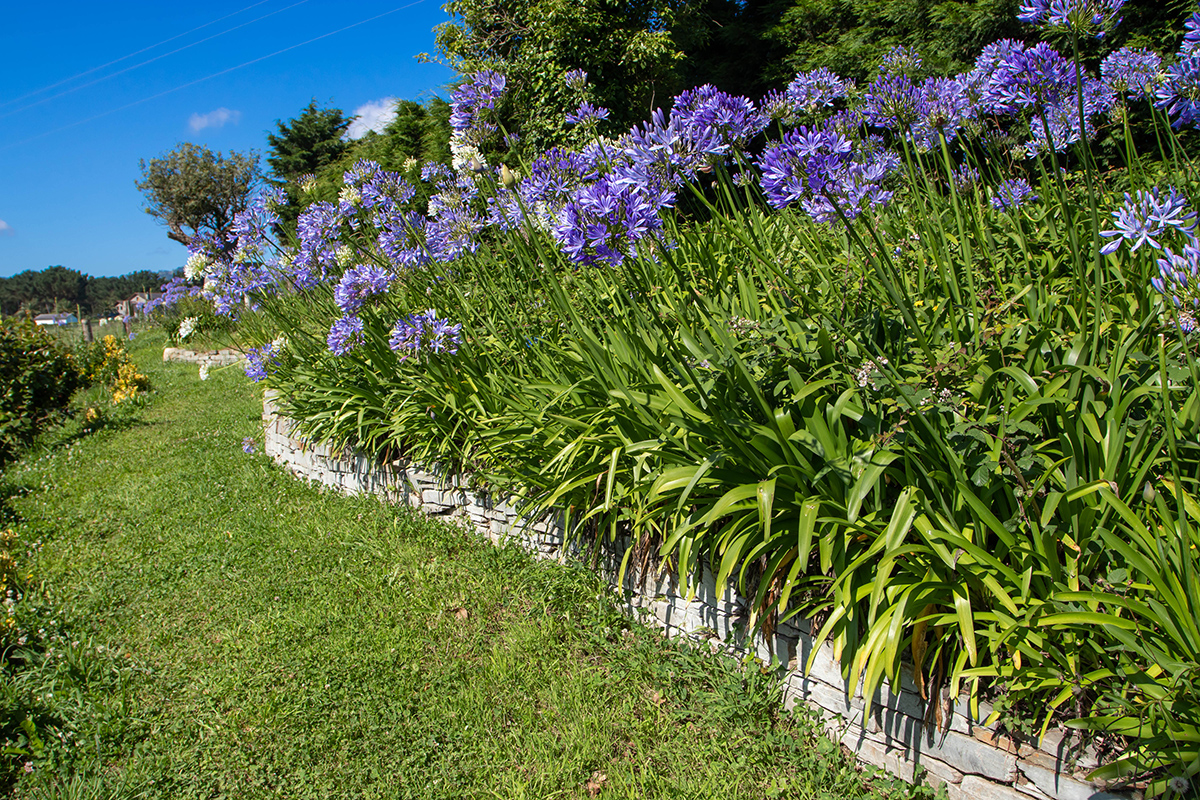Agapanthus Expanding Conditions: Dirt, Sunlight, and Watering
Agapanthus Expanding Conditions: Dirt, Sunlight, and Watering
Blog Article
Letting Loose the Secret to Effective Agapanthus Growing: Tips and Tricks for a Flourishing Garden
In the world of horticulture, cultivating agapanthus effectively needs a strategic strategy that incorporates various aspects of plant care. By understanding the nuances of agapanthus growing, one can create an atmosphere where these plants prosper and flower perfectly.
Planting Agapanthus: Ideal Practices
When planting Agapanthus, proper soil preparation is important for making sure successful development and development of these beautiful flowers. Agapanthus, frequently referred to as Lily of the Nile or African lily, grows in well-draining dirt with a slightly acidic to neutral pH degree - Agapanthus. Before growing, it is important to change heavy clay dirts with raw material such as garden compost or peat moss to enhance drainage and provide vital nutrients for the plants
To grow Agapanthus, pick a place that obtains full sunshine to partial shade, as this will advertise healthy development and bountiful blooming. Dig a hole two times the diameter of the plant's root round and put the Agapanthus at the very same depth it was formerly expanding. Delicately backfill the opening with soil, pushing down securely to eliminate any type of air pockets around the roots.
Water the newly planted Agapanthus thoroughly and proceed to keep the dirt uniformly wet, especially during the plant's energetic growing season. Agapanthus. Applying a balanced fertilizer once a month can additionally sustain the plant's growth and flowering. By adhering to these ideal practices for growing Agapanthus, you can produce a magnificent display of these exciting blossoms in your yard
Perfect Dirt Conditions for Agapanthus
For ideal growth and growing success of Agapanthus plants, ensuring the soil conditions are suitable is important. Agapanthus thrives in well-draining dirt with a somewhat acidic to neutral pH degree varying from 6.0 to 7.0. This sort of dirt enables appropriate water drain, preventing waterlogging which can cause root rot. To improve soil drainage, take into consideration adding natural matter such as garden compost or peat moss when preparing the growing website. Furthermore, Agapanthus chooses dirt that is abundant in nutrients, so including a balanced fertilizer during the expanding season can promote healthy and balanced growth and lively blooms.

Watering and Fertilizing Tips
To ensure healthy and balanced growth and dynamic blooms, proper watering and fertilizing techniques are vital for successful Agapanthus farming. Agapanthus plants benefit from regular watering, specifically during the expanding season.
When it concerns feeding Agapanthus, a well balanced plant food with equal parts nitrogen, phosphorus, and potassium can be applied in the springtime to advertise healthy growth and flowering. Slow-release fertilizers are suitable for offering nutrients slowly over a prolonged period. Prevent over-fertilizing, as this can bring about extreme foliage growth at link the expenditure of blossoms.
Additionally, incorporating natural issue like garden compost into the soil can improve nutrient degrees and improve soil framework, assisting in the overall health of the Agapanthus plants. By complying with these watering and feeding tips, garden enthusiasts can guarantee their Agapanthus plants flourish and produce magnificent displays of flowers.
Pruning and Deadheading Methods
Appropriate trimming and deadheading methods play a vital role in preserving the health and aesthetic appeals of Agapanthus plants, complementing the essential practices of watering and feeding for effective growing. Trimming Agapanthus involves eliminating invested blossom heads, yellowing or dead fallen leaves, and total shaping of the plant to advertise far better growth. Deadheading, the process of removing faded blossoms, not just improves the plant's look yet also motivates additional blooming.
When deadheading Agapanthus, it is advisable to snip off the blossom stem at the base using sharp, tidy shears. This process reroutes the plant's power from seed manufacturing back right into origin and vegetation growth, promoting a much healthier and a lot more durable plant. Normal deadheading can prolong the flowering duration of Agapanthus and stop self-seeding, which can bring about congestion.
In terms of trimming, Agapanthus usually take advantage of a light trim after flowering to clean up the plant and urge fresh development. Reducing the spent blossom stems and removing any damaged or dead foliage aids preserve the plant's vigor and total look. However, it is important to stay clear of reducing into the crown of the plant, as this can damage its health.

Protecting Agapanthus From Pests and Diseases
Executing reliable bug and disease administration techniques is critical to safeguarding the health and wellness and vitality of Agapanthus plants in cultivation. Agapanthus are normally durable plants, yet they can still come down with numerous pests and illness otherwise properly taken care of. One typical pest that influences Agapanthus is the Agapanthus borer, a caterpillar that tunnels right into the go to website plant, causing damage to the fallen leaves and flowers. To prevent problems, normal evaluation of the plants is essential. If borers are detected, they can be by hand removed, or insecticidal soap can be used as a control measure.
In enhancement to insects, Agapanthus are prone to diseases such as origin rot and fungal fallen leave spots. These problems can often be stopped by guaranteeing proper drain and avoiding overwatering. Affected components of the plant should be immediately eliminated to prevent more spread if indications of disease appear. Fungicides might likewise be utilized as a treatment measure, complying with the maker's directions very carefully. By staying attentive and addressing bug and illness problems promptly, garden enthusiasts can aid their Agapanthus flourish and flourish.
:max_bytes(150000):strip_icc()/agapanthus-growing-guide-7368912_04-66a3f4cf245b4332b28954dd37c784f5.jpg)
Final Thought
Finally, effective cultivation of agapanthus requires appropriate growing strategies, optimal soil conditions, sufficient watering and fertilizing, regular pruning and deadheading, and protection from illness and bugs. By complying with these tips and techniques, garden enthusiasts can guarantee a growing garden full of lovely agapanthus blooms. Agapanthus. Bear in mind to keep constant care and interest to detail to promote the wellness and longevity of these spectacular plants
When growing Agapanthus, correct soil preparation is important for ensuring effective development and advancement of these attractive blossoms.Water the newly grown Agapanthus extensively and continue to maintain the soil discover here evenly moist, particularly throughout the plant's energetic growing period.For optimum growth and growing success of Agapanthus plants, making sure the soil problems are optimal is essential. When growing or transplanting Agapanthus, ensure the soil is well-prepared to give the required foundation for the plants to establish themselves effectively. One typical insect that impacts Agapanthus is the Agapanthus borer, a caterpillar that tunnels right into the plant, creating damage to the flowers and fallen leaves.
Report this page